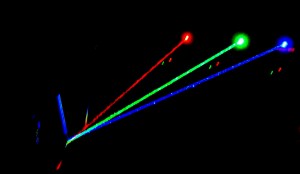 My company has been selling integrated and stand alone laser systems for about a decade now. Over that time laser use has drastically increased, but laser manufacturers have been slow to respond to the market demand. The state of the laser manufacturing industry is an interesting one, as it’s dominated by telecommunication applications, and our imaging/optical side of the market is a very small slice of the overall motivating financial pie that these major companies play in. To that end I wanted to share my experiences, especially with new owners or potential owners, on what to expect from one of these systems.
My company has been selling integrated and stand alone laser systems for about a decade now. Over that time laser use has drastically increased, but laser manufacturers have been slow to respond to the market demand. The state of the laser manufacturing industry is an interesting one, as it’s dominated by telecommunication applications, and our imaging/optical side of the market is a very small slice of the overall motivating financial pie that these major companies play in. To that end I wanted to share my experiences, especially with new owners or potential owners, on what to expect from one of these systems.
Lifetime
A typical laser marketing sheet will quote a lifetime of somewhere between 5,000 and 20,000 hours. You can find examples of this here and here. Along with many customers, I assumed these were idealistic numbers, but also assumed that the lasers used in our applications would make at least half of that lifetime. It turns out, in my experience, roughly 5-10% of these lasers don’t make it near that long. A good indicator of what the laser manufacturers really expect can be found in the warranty. Most lasers quote a 1,000 hr and 1 or 2 year warranty. The lasers that I’ve seen do down typically range in the 400-800hr mark, but this is over 2 years or so of use. So – before you buy a laser assuming it’s going to last 10 years, investigate the warranty as well as the expected replacement cost. A failure rate of 1 in 10 is very high for a product that supposed to be so reliable.
Beam Quality
Microscopists use lasers primarily for single mode fiber coupling. I explained how this is done in my post on fiber types used in microscopy. One of the requirements for fiber coupling is that the beam quality emitting from the laser must be good enough to efficiently couple the fiber. I’ve seen one instance where placing a laser power meter in front of a laser showed 460mW of output, but I could couple no more than 60mW into a single mode fiber. Beam quality can change over time, reducing the overall coupling efficiency on the laser combiner, requiring either a repair or replacement laser head somewhere down the road. In this case the laser doesn’t “break” per-se, but it sure reduces it’s usefulness for our applications.
Service
Of the units I’ve had to get repaired or replaced, the typical lead time has been 6-8 weeks. Thankfully our integrating companies who make launches have been able to loan us stand-in units while a repair is taking place. Service costs have ranged from reasonable, to the most extreme case where a manufacturer claimed “this laser isn’t made to be serviced”. It had died in under 800 hours, while the manufacturer claimed a 40,000 hour expected lifetime! It’s important to consider how downtime may affect your instrument, and is an important aspect of negotiating a service contract for a laser equipped system.
Conclusions
I’m convinced that the laser suppliers in our industry have no idea how we typically run our instruments. I typically see 300 hours per year usage, whereas lasers are left on forever until they die in telecom applications (consider a 1 year/2000hr warranty. Running a system at 30% duty cycle in a year would provide this usage, but even heavily used microscopes don’t have that much uptime.) I think there is a lot of room for improvement. Setting fair expectations on lifetimes, providing reasonable product service turnarounds, and offering fair warranties are easy fixes and ways to increase market share for these companies. Until manufacturers decide to improve these things, the only alternative for the customer is to purchase a maintenance contract for laser equipped systems. It’s a gamble either way: If on contract and nothing breaks, then you’ve lost the contract price worth of money. If you don’t have a contract and a laser dies, you’re looking at a costly repair. My advice is to stick with straight diode lasers if possible, they seem to have a longer life potential. I’d also use the lowest power you can get away with. Power directly equates to massive cost increases, and I routinely see people running systems at 70-90% attenuation. In these cases a laser was purchased at a high premium for power that won’t be used, and the risk/cost of replacement is much higher. If you stick with reasonable power levels, it’s sensible to avoid a service contract, as one dead laser may cost $6-9k, vs. a high power laser, say at 350mW, costing $19k to replace.
Coherent light has numerous advantages for microscope coupling, but it’s important to go into a major system purchase with eyes wide open. I believe the most important thing to consider is the real world expectation. What can I expect for power 2-3 years down the road? What should I budget for replacement cost? Is there a plan for avoiding downtime in a service contract? Having a good handle on these costs will enable you to make an informed decision on what you buy, and will avoid the sticker shock and downtime of a dead laser, should one go bad.
-Austin